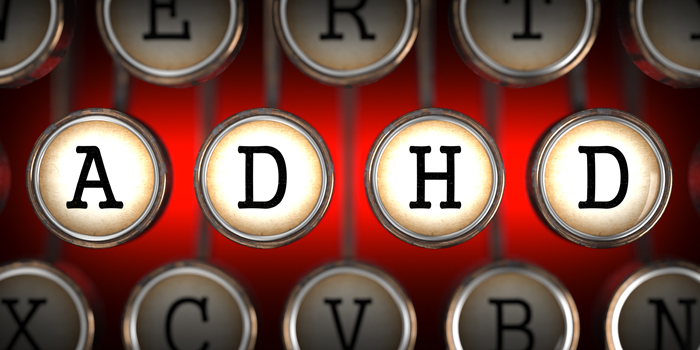
Attention Deficit Hyperactivity Disorder (ADHD) is a very common disorder identified in children. As children age, the manifestation of ADHD often changes. While the hyperactivity often subsides during adolescence, individuals with ADHD can be demanding and frustrating for those attempting to support the individual.
At an early age, individuals with ADHD are often encouraged to participate in sports to help manage symptoms associated with the disorder. However, participation in sports can be quickly tarnished due to anger and frustration relating to relationships, unresolved conflicts, and from the coaches and teammates whose patience can wear thin with unregulated, hyperactive, or inattentive behavior.
RELATED: Specialized Training Programs for Children with Disabilities
Negative perceptions towards the individual with ADHD can begin to develop. The negative perceptions can include that the individual with ADHD is acting a fool intentionally, he/she is doing or not doing something just to make you mad, he/she is not committed, is not very bright, is not motivated, certainly not a capable athlete, etc. The list can be lengthy identifying what is wrong with the individual, often overlooking behavioral manifestations of symptoms related to ADHD and failing to recognize the importance of improving professional skill sets to best support the individual with ADHD on your team, in your gym, classroom, life, etc. While there can be challenges supporting an individual with ADHD, an appropriate skill set should be developed by professionals interacting with individuals with ADHD. Having an athlete with ADHD can yield significant benefits if harnessed correctly.
The purpose of this article is to outline the main areas impacted by an individual with ADHD to better support these issues on a team, gym, classroom, or wherever in life the relationship may be. Before we get there, we need to be clear what we are discussing.
ADHD 101
There are three types of Attention Deficit Hyperactivity Disorder. Long gone are the days of identifying the disorder as ADD and ADHD; it is now simply ADHD and an individual’s diagnosis is differentiated by type. A medical diagnosis of ADHD is only made by a physician with direct input from the family of the individual with ADHD and symptoms manifesting in more than one setting (home, school, work, etc). An educational diagnosis of ADHD can also be made by a school psychologist, again with the direct input from the family with symptoms documented in more than one setting outside of the school.
I am listing this information only to create awareness of the process and disorder, not for individuals to diagnose or self-medicate. Any concerns about ADHD need to be addressed directly with a specialized physician who is equipped to handle to complexities of this disorder.
The Three Types of ADHD
- Predominantly Hyperactive-Impulsive — There are enough symptoms of hyperactivity-impulsivity over the previous six months.
- Predominantly Inattentive — There are enough symptoms of inattention but not hyperactivity over the previous six months.
- Combined Presentation — When the criteria for inattention AND hyperactivity-impulsivity are present over the previous six months.
ADHD is more complicated than a few bullet points, but it needs to be clear what specifically we are talking about. Manifestation of symptoms can change over time and/or the presentation of ADHD. The more versed a coach, teacher, or mentor is on what the disorder is, the better he/she is able to support the individual on and off the field. If an individual is being medically treated for ADHD, it is also important to recognize that by the end of the school day his/her medication is likely wearing off and can create additional symptoms or an emergence of behaviors that may not be present during the school day. He/she may appear to be a completely different person after 3:00; therefore it is critically important to change any expectations or judgments about the individual.
Hyperactivity and Impulsivity
This presentation of ADHD is generally the typical association made with ADHD. As an individual ages, the manifestation of symptoms is often reduced and move into more inattentive type behavior.
Symptoms of hyperactivity and impulsivity include:
- Fidgeting
- Tapping hands or feet or squirming
- Getting out of seat/moving when remaining still is expected
- Feelings of restlessness
- Excessive talking, blurting, interrupting others or butting into conversations
- Difficulty waiting his/her turn
- Delayed filter where the individual may act before thinking, regardless of consequences
- Rushes through work, the quality is often poor
Inattention
Inattention is another area used to identify ADHD. Inattention is marked by failing to pay close attention to details and/or making careless errors in work, school work, or life activities.
Additional symptoms of Inattention include:
- Difficulty sustaining attention and focus on non preferred activities
- Appears not to be listening when spoken to or during instruction
- Daydreaming
- Slow moving
- Misses key instructions or explanations
- Failure to complete instructions, activities, or school work due to a loss of focus or getting sidetracked
- Difficulty with organization
- Resistance to activities that require sustained mental effort over a long period of time
- Losing required materials, equipment, or other items
- Easily distracted and often forgetful
Combined Type
This categorization of ADHD is used when there are enough symptoms that meet the criteria of both inattention and hyperactivity-impulsivity.
Implications of ADHD
ADHD has direct and significant impacts on day-to-day activities and processing by an individual impacted by the disorder. It is important to recognize that not every individual with ADHD experiences every one of these deficits, and not each area of impairment is a direct correlation to ADHD. These are the areas for which accommodations, open communication, and advocacy make the biggest difference in the overall performance of a student with ADHD. Many of the previous symptoms of ADHD come into play here and dramatically impact performance in these areas.
Processing Speed
Processing speed refers to the rate in which we deal with information. Processing includes taking in new information and accessing/retrieving information we already know. Impaired or variable processing speeds are more apparent in individuals with symptoms of inattention
Slow processing impacts an individual’s ability to make quick decisions. Processing speed is impacted by taking in and understanding the information being presented, processing it, and then formulating a response. In short, processing speed is the time it takes to complete a task.
Slower processing speed impacts an individual’s ability to hear and understand full instructions for completing a task. The individual may be slow to copy down information, which results in gaps of information actually received, slowing activity completion.
If you’ve ever spoken with someone and can see them thinking about what you said and they do not respond immediately, that’s an example of processing speed. There is a delay in response or confusion with what was said or presented.
Working Memory
Individuals with ADHD have difficulty with working memory and the symptoms can be moderate to severe. Working memory is when information goes in, is stored for a few seconds, and is then required to be changed or manipulated in order to complete a task. Working memory space is limited and the larger the information being presented, the higher likelihood of error. Working memory is directly related to maintaining attention and resisting distraction. The greater difficulty of task, the more difficult it becomes for the individual to ignore distracting information. Individuals with inattentive or combined subtype of ADHD will likely experience difficulty in this area.
Long Term Memory
Long term memory is typically related to the storage of information indefinitely, assuming the individual has the ability to access and retrieve the information. On the other hand, short term and working memory can last anywhere from 18-30 seconds. An individual with ADHD may experience difficulties in this area as it relates to placing information into and getting it out of long term memory.
Hyperfocus
Inattention and hyperactivity are commonplace with individuals with ADHD. ADHD isn’t an absence of the ability to maintain focus; it is an overall impairment or disregulation of attention. While the individual may struggle to maintain focus and process demanding information, the ability to hyperfocus is a contradiction. Hyperfocusing is when an individual with ADHD is able to concentrate to extremes on preferred information and topics. The individual with ADHD is drawn to activities that provide instant feedback and will often stick with these activities longer than individuals without ADHD.
This trait is an asset if nurtured and harnessed correctly. The key here is that the topic or activity is interesting or rewarding to an individual with ADHD. He/she will often spend extreme amounts of time and effort devoted to one topic or task and master that topic/skill with extreme precision and performance. Getting the individual to transition away from the preferred activity may be extremely difficult.
An individual with ADHD can be an asset to their team or program due to the ability to hyperfocus. He/she can be given a role which they have ownership over along with the freedom to master the expectations. In order to harness this skill, there must be interest and willingness by the individual with ADHD. Oftentimes they prefer activities and tasks that give the individual full control over. While team sports may end in disaster, an individual with ADHD can excel in individual sports that are interesting and motivating, harnessing his/her ability to hyperfocus.
MORE: Developmental Strength: Modifications & Some Choices
Professional Responsibility
Attention Deficit Hyperactivity Disorder is a very common childhood disorder that continues well into adulthood. As an individual with ADHD ages, manifestations of the disorder often change. Organizational skills and strategies are improved over time by the individual with ADHD. Many youth with ADHD are pushed into playing sports as a way to burn off energy and mitigate some of the hyperactivity common with the disorder. Unfortunately, when adults and professionals are not properly skilled in identifying and supporting an individual with ADHD so he/she can become positive and productive members of the team, disaster strikes. Teammates get frustrated, adults get angry and their patience wears thin. The individual with ADHD will internalize messages of being stupid, not listening, being a fool, or the stupid kid. The consequences of not learning how to appropriately support an individual with ADHD are poor peer relationships, diminished self-esteem, and an unwillingness to continue playing sports or participate in any other once-desired activity. The experience for the individual with ADHD will often hinge on the coach’s ability to positively manage the individual and his/her ADHD symptoms, not through negative assumptions or judgments.
References
- American Psychiatric Association. (2013). Diagnostic and statistical manual of mental disorders (5th ed.). Arlington, VA: American Psychiatric Publishing.
- Symptoms and Diagnosis. (2016). Retrieved August 17, 2016, from http://www.cdc.gov/ncbddd/adhd/diagnosis.html














Regards,
Mjw